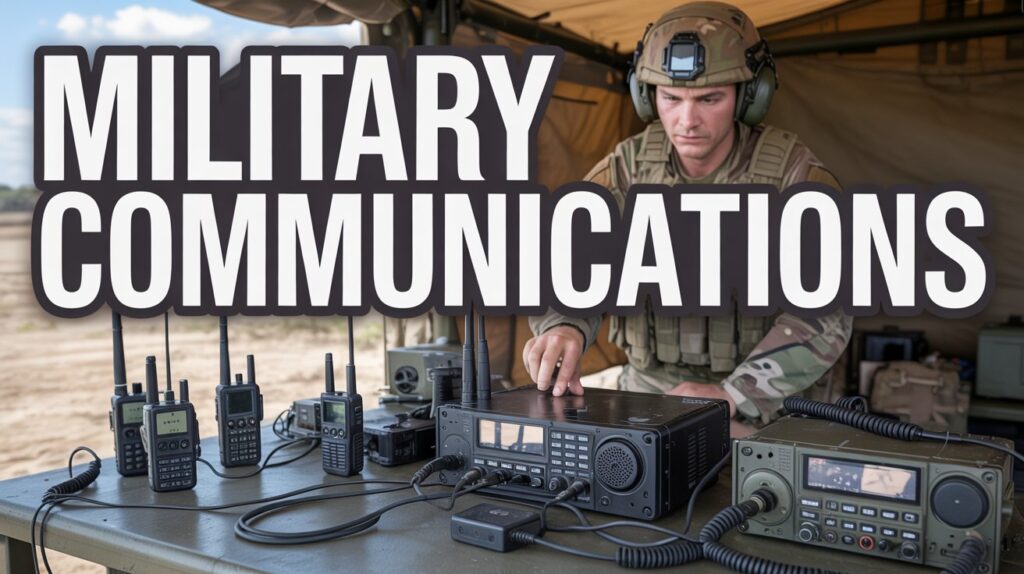The modern battlefield is evolving at an unprecedented pace, and military communications systems are at the heart of this transformation. As global security challenges grow more complex, the demand for robust, secure, and real-time communication networks is driving the evolution of defense infrastructure. Military communications are no longer limited to voice transmissions; they now encompass command and control, intelligence gathering, surveillance, reconnaissance, and tactical operations, providing forces with a decisive advantage in operations.

The shift toward network-centric warfare and the integration of hybrid combat strategies have emphasized the critical role of military communications. Modern defense forces require systems that are resilient, interoperable, and capable of transmitting vast amounts of data under challenging conditions, from urban battlefields to remote maritime zones.
Download PDF Brochure @ https://www.marketsandmarkets.com/pdfdownloadNew.asp?id=66198542
Key Drivers Shaping the Future of Military Communications
Several factors are shaping the growth and transformation of the military communications market:
- Evolving Threat Landscape – The rise of asymmetric threats, cyber warfare, and drone-based attacks has increased the need for real-time communication networks capable of rapid response and situational awareness.
- Technological Advancements – The integration of Artificial Intelligence (AI), Machine Learning (ML), and advanced analytics is enabling faster decision-making, predictive operations, and automated battlefield management.
- Modernization of Aging Infrastructure – Many defense forces are upgrading legacy systems to ensure compatibility with modern digital platforms, satellite communications, and secure networks.
- Network-Centric and Hybrid Warfare – Modern military operations rely on coordinated, multi-domain operations, requiring reliable communication between land, naval, airborne, and unmanned systems.
- Global Expansion of Defense Capabilities – Emerging economies are investing heavily in advanced communication systems to strengthen national defense, creating new market opportunities for military technology providers.
Platforms Driving the Transformation
Military communications platforms have diversified, with growth in several key segments:
- Land Systems – Ground troops rely on advanced communication networks for real-time command, control, and coordination in combat zones.
- Naval Systems – Ships and submarines utilize secure communication channels for coordination, navigation, and situational awareness in maritime operations.
- Airborne Systems – Aircraft, helicopters, and UAVs require seamless communication links for targeting, surveillance, and strategic missions.
- Unmanned Vehicles – Drones and robotic vehicles are increasingly used for reconnaissance, surveillance, and hazardous missions, relying on high-quality communications for real-time data transmission and operational control.
Among these, unmanned systems are emerging as a key growth driver, offering the ability to operate in hostile environments without endangering human personnel.
Application Trends: Intelligence, Surveillance, and Reconnaissance (ISR)
ISR applications remain the cornerstone of modern military communications. ISR provides commanders with the intelligence required to make timely and accurate decisions, directly impacting mission outcomes.
- SIGNIT (Signal Intelligence) captures and analyzes electronic signals, including radio and radar transmissions.
- IMINT (Imagery Intelligence) collects and processes visual data from satellites, drones, and reconnaissance aircraft.
ISR enhances capabilities in target tracking, strike planning, and battlefield awareness, making it a critical area of focus for defense agencies worldwide.
Systems: SATCOM and Beyond
Military SATCOM systems dominate as the backbone of secure, global military communication. These systems are vital for:
- Global connectivity in remote or contested environments.
- Real-time data transmission across multiple domains.
- Redundancy and reliability, serving as backup when primary communication channels fail.
Emerging technologies are now enhancing SATCOM capabilities, including integration with commercial satellite networks, supporting disaster response, coalition operations, and navigation.
Other systems, such as tactical radios, secure data links, and battlefield management networks, complement SATCOM to provide comprehensive communication coverage for modern defense forces.
Market Opportunities and Point of Sale Trends
The upgrade and modernization segment is gaining momentum as militaries worldwide seek to enhance existing communication networks. Key drivers include:
- Incorporation of AI, ML, and advanced analytics.
- Replacement of aging systems approaching end-of-life.
- Government defense budgets prioritizing modernization and interoperability.
Upgrades ensure forces remain equipped with cutting-edge communication solutions, maintaining operational readiness in increasingly complex threat environments.
Regional Outlook
The Asia Pacific region is emerging as a hub for military communication investments, driven by countries like China, India, Japan, and South Korea. Growth in this region is fueled by:
- Expanding defense budgets.
- Focus on network-centric operations and interoperability.
- Increasing investment in unmanned systems and ISR technologies.
Other regions, including North America and Europe, continue to innovate with advanced technologies and robust defense communication infrastructures.
Leading Companies Driving Innovation
Key players advancing military communications include:
- Raytheon Technologies Corporation (US)
- Northrop Grumman Corporation (US)
- Thales Group (France)
- Elbit Systems (Israel)
- L3Harris Technologies Inc. (US)
- Lockheed Martin Corporation (US)
- BAE Systems (UK)
- Saab AB (Sweden)
Ask for Sample Report @ https://www.marketsandmarkets.com/requestsampleNew.asp?id=66198542
These companies focus on technological innovation, global manufacturing capabilities, and strong distribution networks, ensuring continued growth and leadership in the military communications sector.
The future of military communications is being shaped by rapid technological advancements, evolving operational needs, and the growing importance of ISR, SATCOM, and unmanned platforms. Modern defense forces require secure, reliable, and interoperable communication networks to maintain situational awareness and operational superiority.